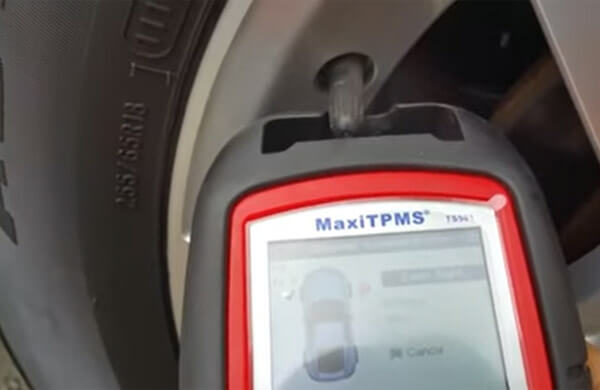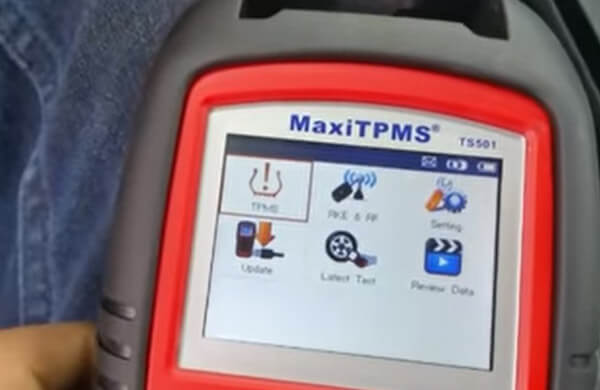Every Modern vehicle has a TPMS system. When a tire’s pressure drops below a preset level, it alerts you with a warning message on the car’s dashboard.
When you drive, it plays a crucial role in monitoring tire pressure through air pressure sensors installed on the car’s tire.
Related: Are Kia Souls All-Wheel Drive? (Should You Buy It)
If the tire pressure is less than the recommended PSI, it sends the signal to the car computer or P.C.M. When the P.C.M. detects low tire pressure, it stores code along with the TPMS light, or you might see a “service tire monitor system” warning message on the dashboard.
You must take the warning seriously and take the best action to fix the issue. In this blog, our sole purpose is to provide you with a lot of information to solve the problem.
What Does “Service Tire Monitor System” Mean?
In simple language, the “Service Tire Monitor System” is a warning message that appears on an automobile dashboard if the monitoring system finds the tire pressure less than the recommended level.
It may be accompanied by a small yellow light in the gauge cluster. The sole purpose of these warnings is to alert you about the malfunction of the TPMS system. Once the alert is activated, you need to fix the tire pressure monitoring system.
How Does Tire Pressure Monitoring System (TPMS) Work?
It works in a straightforward way by continuously monitoring tire pressure through air pressure sensors equipped with various wheels. This real-time reading is then sent to the car’s control module.
If it is not within the prespecified range, the TPMS light comes on the dash. You may need to inflate the respective tire or replace the respective sensor to fix the issue.
Direct and Indirect Tire Pressure Monitoring System

The tire monitoring system can be divided into two parts: direct and indirect monitoring systems. As the name suggests, a direct monitoring system directly monitors the tire pressure through an air pressure sensor.
Air pressure sensors are built into each tire and wirelessly transmit the information as a radio signal to the vehicle’s control module. The module receives this data and triggers a TPMS light and a “service tire monitor system” warning message.
On the other hand, an indirect tire pressure monitoring system works another way. It does not require any direct pressure sensor. Instead, it depends on calculating relative wheel speed using an ABS wheel speed sensor.
The logic behind this system is that speed sensor data is analyzed to determine the tire size from its rotational speed. Then the tire size is calculated.
Smaller tires rotate more quickly. Therefore, underinflated tires are smaller than properly inflated tires. The control module then analyzes this, triggering a warning light or “check tire monitor system” warning message on the dashboard.
Why Does the TPMS System Fail?
The TPMS system of your car is often subject to failure. In a direct monitoring system in which a pressure sensor is mounted to the tire, the signal from the sensor is transmitted wirelessly.
This wireless system and the sensor stem itself are subject to challenges. Over time, the wireless system can fail or become corrupted.
On the other hand, wear and tear happens to the tire, which might affect the sensor. In any case, you have to replace the sensor and reprogram it.
The tire pressure sensor comes with a battery, which is not serviceable. Thus, fixing the tire pressure sensor and replacing it is pretty challenging.
Fortunately, the indirect monitoring system is less vulnerable since no sensor is directly involved. However, every time you go for a long trip and inflate the tire, this system must be reset.
In addition to the sensor issues, the TPMS system may fail due to a dead or weak battery faulty control module, or P.C.M.
Your car’s sensor takes the necessary power from the battery, which may have less energy. If the battery is weak, it may not send the signal to your vehicle’s onboard computer.
Similarly, if the car powertrain control module malfunctions, it may not correctly interpret the reading from the sensor.
Is there a difference between the “service tire monitor system” warning message and the TPMS light?

Both warnings are related to the tire pressure monitoring system and indicate that tire pressure monitoring system service is required. However, each can bear a particular meaning different from the others.
Due to a lack of available material, we are ambiguous about how these two warning types differ from each other. However, if you only see the TPMS yellow light on the dash, it could mean one or more tires on the vehicle have low air pressure.
On the other hand, if you only have the “Service Tire Monitor System” warning message appearing on the dash, it could mean TPMS has failed, such as a faulty air pressure sensor or malfunctioning control module.
The “Service Tire Monitoring System” is usually accompanied by a small TPMS yellow light. In that case, you may need to visit a mechanic or dealership for tire pressure service.
What To Do If the Service Tire Monitor System Warning Appears?
The warning message can appear anytime when the engine is on. When it comes on, you need to inflate the tire with the correct amount of air.
If the light is still on after the tire is inflated with the recommended PSI, reset the TPMS light. Resetting the TPMS light might vary depending on your car’s make and model.
Thus, you need to consult the car’s repair manual or search online for the right approach.
Here are some general steps that you can follow:
- Step 1: Find the reset button.
- Step 2: Turn the Ignition toward “on,” but do not start the engine.
- Step 3: Press and hold the reset button until the TPMS light flashes three times.
- Step 4: Release the reset button once the light flashes a few times. For some cars, after the button is pressed for a few seconds, you might also hear a beep sound, and then release the button.
- Step 5: Drive the vehicle for about 20 to 30 minutes for the sensor to be reset.
What To Do If the Warning Reappears?
If the TPMS light returns after you finish the reset procedure, you should take your car to the mechanic for a more in-depth inspection. The mechanic will inspect the air pressure sensor and electrical system to find the root cause.
Sometimes the sensor needs to be replaced, or you might need a new set of tires. In any case, you need a certified mechanic to find the issue and get it fixed.
How To Avoid TPMS Failure?
Preventing something is always better than a cure. If you take much time to fix the TPMS failure, you may have to pay more for replacement parts such as the tire and sensors. By following some tips, you can prevent TPMS failure.
- When changing the tire, ensure the replacement procedure does not affect the sensor.
- Make sure to check the tire pressure gauge before a long trip.
- Replace the air pressure sensor before its expected life.
- Clean the sensor if it becomes dirty.
- Over time, the tire gets old and becomes worn; replace it with a high-quality tire.
